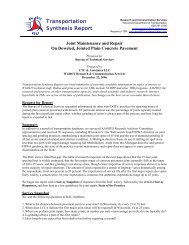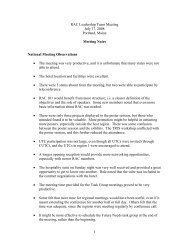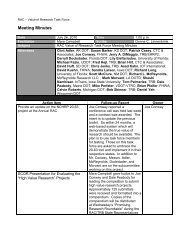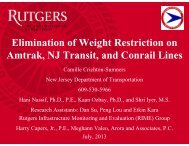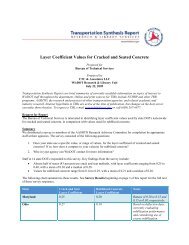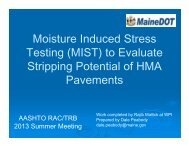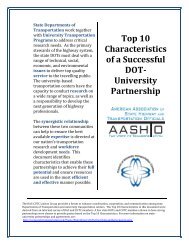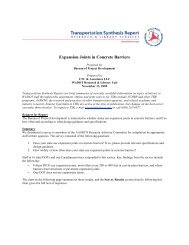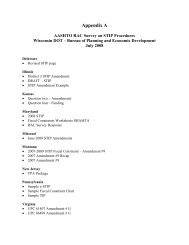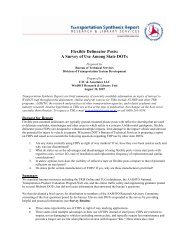PART IV: Summary of Comments - SCOR/RAC
PART IV: Summary of Comments - SCOR/RAC
PART IV: Summary of Comments - SCOR/RAC
Create successful ePaper yourself
Turn your PDF publications into a flip-book with our unique Google optimized e-Paper software.
<strong>PART</strong> <strong>IV</strong>: <strong>Summary</strong> <strong>of</strong> <strong>Comments</strong>17-May-10Reviewer <strong>Comments</strong> Distribution <strong>of</strong> RatingsItem #51:G-03Institutionalizing Safety Workforce Development(17)(46)NR 0 1 2 3 4 5<strong>SCOR</strong> 1 1 3 4 5 3<strong>RAC</strong> 3 4 6 16 11 9Standing Committee on Research■ Good topic, but not really "research". This seems more like training to me. Should this be pursued through anotheravenue? There is a need for this type <strong>of</strong> training, but with current state education and transp. budget limitations, it willlikely be some time before a curriculum can be established. Also, the funding seems disproportionate based on the scope<strong>of</strong> the work and deliverables.■ Cost seems high.■ This would be a good project but it looks like it could be a domestic scan candidate or a good synthesis topic rather thana full NCHRP study. The proposed cost may prohibit those alternatives though.■ It is important to have trained transportation safety pr<strong>of</strong>essionals with the ability to identify, select, prioritize and evaluatecountermeasures■ [Rating: 4] There is a definite need to institutionalize safety within workforce development. The proposed tasks will helpthe safety community progress towards this institutionalization.Research Advisory Committee■ There is formal training (OSHA Training Instititue, ASSE, National Safety Council, etc.), degrees, and ceritification(Board <strong>of</strong> Certified Safety Pr<strong>of</strong>essionals - CSP, etc.) and a national systems safety standard (ANSI/AIHA Z10) availablefor those that work on Transportation worker safety. This appears to be to develop training for those Safety pr<strong>of</strong>essionalsthat would teach the MUTCD content, technical standards for roadway/bridge components, etc. There is overlap for thetwo and this would provide a better train the trainer pool for Safety Pr<strong>of</strong>essionals that focus on internal worker safety(Confined Space Entry, Fall Protection, Trenching safety as well as workzone setup).■ We believe safety is critical and so is this issue. However, the cost and timeframe seem excessive. This is more <strong>of</strong> adetermine what is being done and what needs to be done. A course exists that needs to be updated. This should not be along or extensive process.■ Need to coordinate better with existing programs, ie TCCC■ Institutionalizing safety training and education would meet a recognized need and could positively impact WDOToperations and procedures. The research should include civil engineering curriculum.■ This project addresses an important workforce development need. The work might be better handled as a component <strong>of</strong>Workforce planning rather than as a separate research project. The AASHTO Sub-committee on HR is alreadydeveloping a template to conduct workforce planning which can be used by any DOT.■ Although the intent <strong>of</strong> the project is admirable, there is much safety information available that is not being used or is out<strong>of</strong>-date.There should be a concerted effort to first assemble that information, and then move forward with this project.To try to establish a common workforce development schema for all 50 states will be difficult due to budgetaryconstraints, existing practice and personnel resources.■ DOTs are woefully lacking in institutionalizing safety into there workforce. This is very important issue for the future <strong>of</strong>DOTs.<strong>IV</strong>-35



